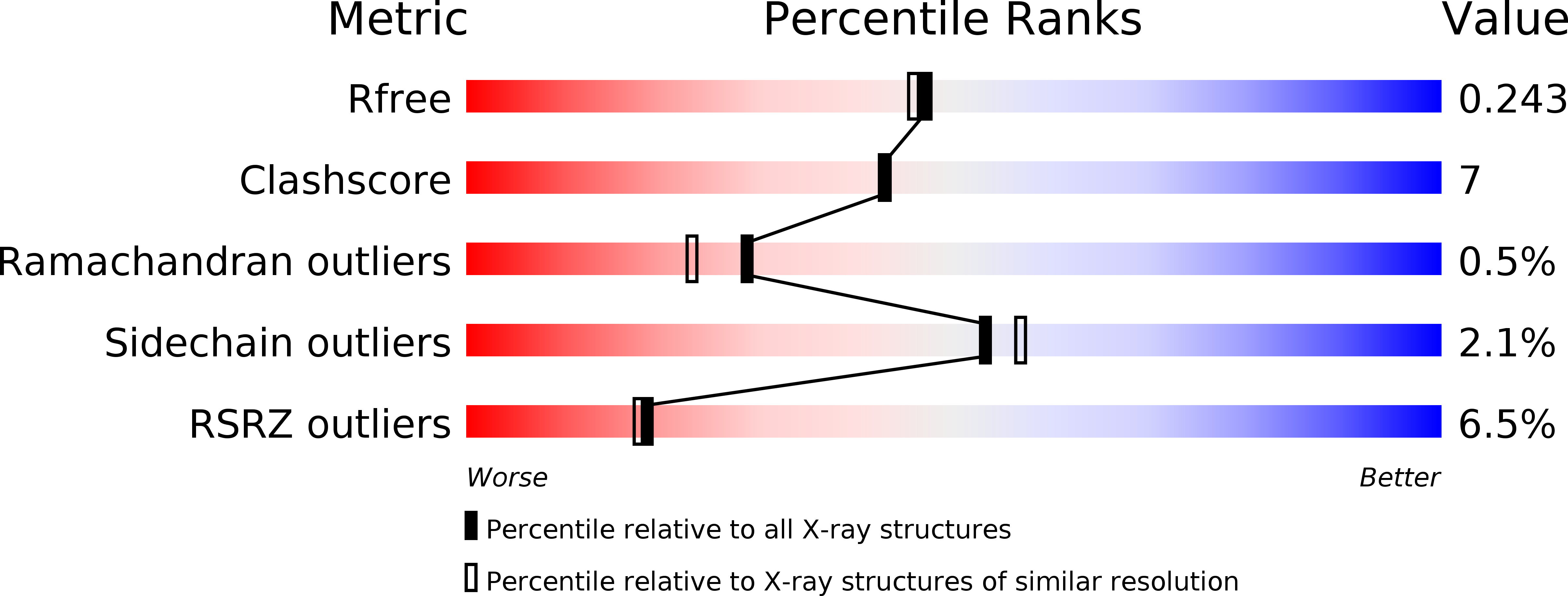
Deposition Date
2003-07-21
Release Date
2003-10-21
Last Version Date
2023-12-27
Entry Detail
PDB ID:
1UIS
Keywords:
Title:
The 2.0 crystal structure of eqFP611, a far-red fluorescent protein from the sea anemone Entacmaea quadricolor
Biological Source:
Source Organism:
Entacmaea quadricolor (Taxon ID: 6118)
Host Organism:
Method Details:
Experimental Method:
Resolution:
2.00 Å
R-Value Free:
0.25
R-Value Work:
0.21
R-Value Observed:
0.25
Space Group:
P 65 2 2


